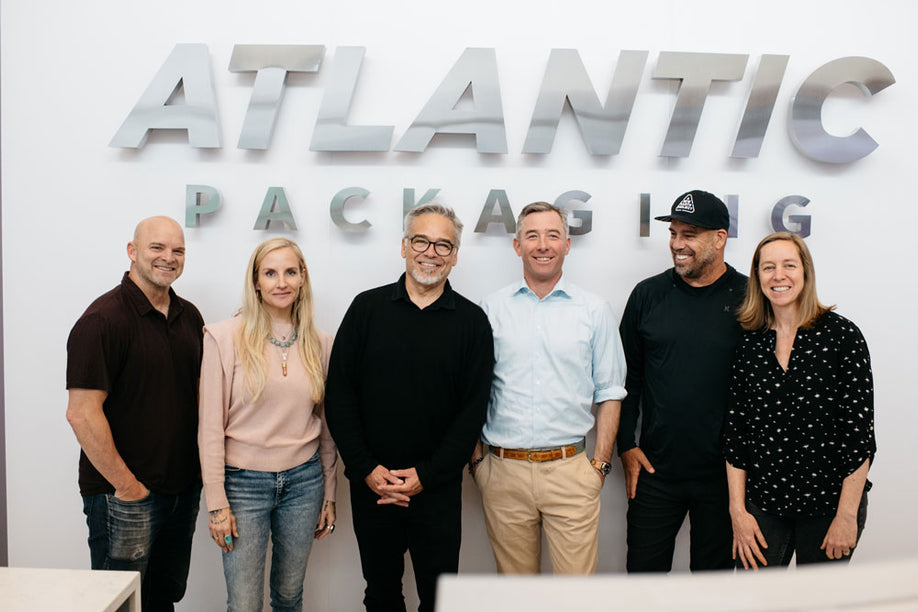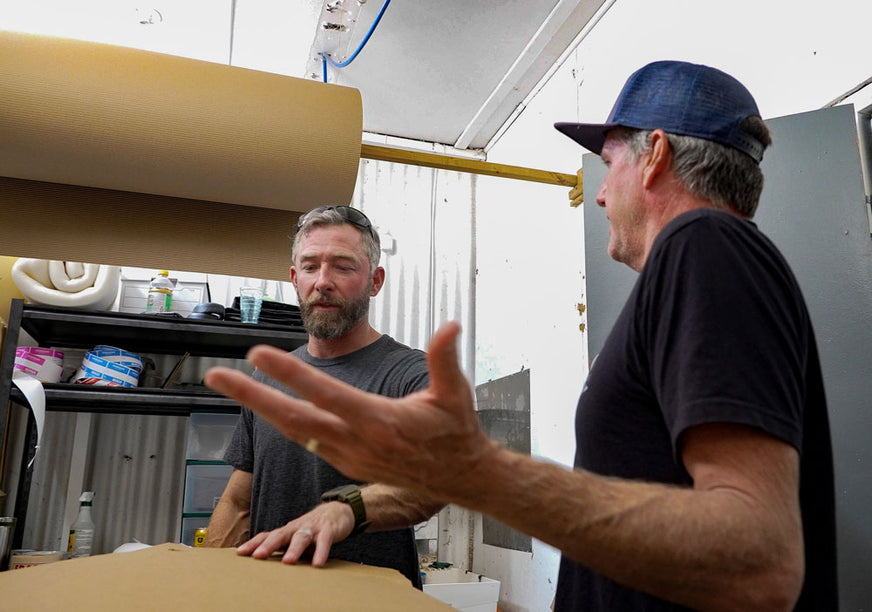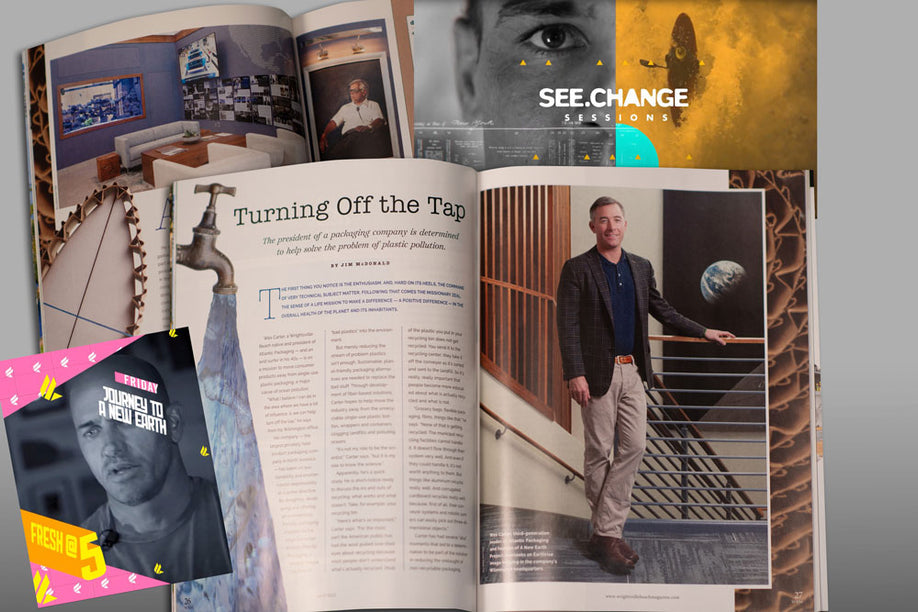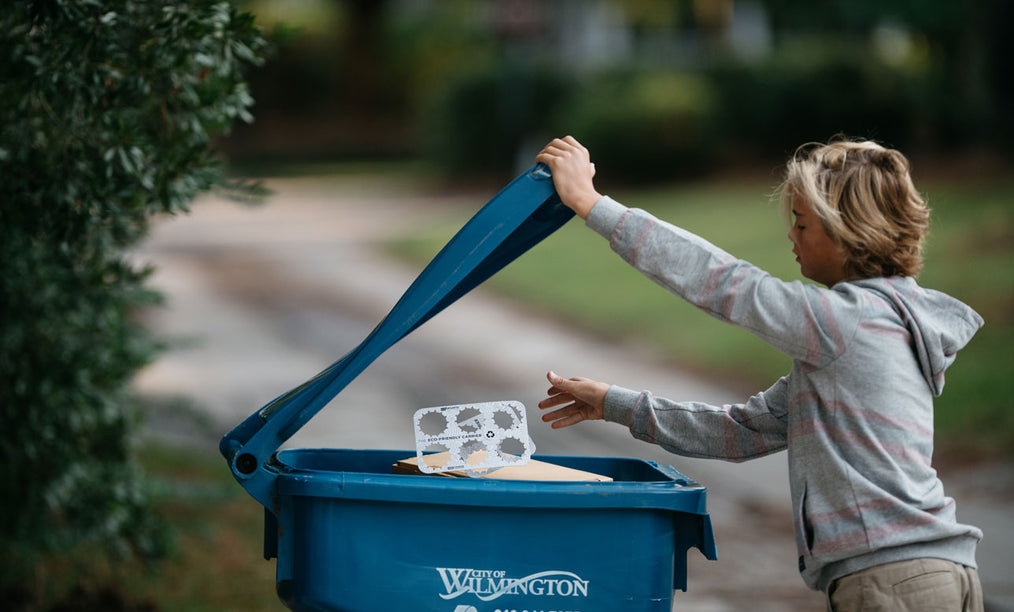If you haven't had a moment to absorb the devastating plastic pollution problem in the global south it's high time you give it a look. Fair warning: depending on your temperament the scenes will either bring tears to your eyes or turn you red with rage.
The gist is this: since 2016 alone we humans have produced more single-use plastic than we did during the 70s, 80s, and 90s combined.
These materials are designed, produced, and largely consumed by those of us living in advanced economies in the global north. Our corporations profiting off of these products flood emerging markets with their goods too. These places, for a variety of reasons, don't have the waste infrastructure capable of dealing with the plastic left behind.
Listen to the full story or scroll down to continue reading:
"Isn't that their own problem?" Say the cynics.
That's a fair question, so let's answer it by reviewing our own lack of success with plastic waste management.
Decades ago, when we first began to replace reusable glass bottles with plastic ones environmentalists immediately started to sound the alarm on the new amount of waste being created.
"Don't worry," said plastic industry lobbyists. "Our plastics are highly recyclable! All you consumers need to do is place things in your shiny new recycling bins." Taking their word for it (along with their money), our governing bodies designed logos, launched massive awareness campaigns, and distributed hundreds of millions of new plastic color-coded bins with fancy wheels! And we were so excited. No more dragging tin cans to the curb!
 In the decades since, we've all been dutifully doing our part...Or so we thought. Here’s what was actually happening.
In the decades since, we've all been dutifully doing our part...Or so we thought. Here’s what was actually happening.
"We were putting our packaging in blue recycling bins and thinking it was getting recycled, thinking we were part of the solution, when really we were contributing to the crisis," says Tina Andolina, a Senior Policy Advisor for California Senator Ben Allen.
After decades of trying, the best recycling rate for plastics the US ever reached was just north of 9%. And at that time, we were selling our blue-bin waste to China, who thought they could flip a profit on it with their low-wage (wink wink) work force.
Meanwhile, back here in the states, feeling quite holy, we espoused our stellar green behavior to the world and patted ourselves on the back. After all, even our perpetually cash-crunched local municipalities were turning a tidy little profit on their China trash trade. With our blinders on, life seemed good.
Until this arrangement all came crashing down.

As years passed, Chinese citizens watched their own rivers, lakes, and streams get destroyed. Our waste shipments were too far contaminated to have any value. Eventually word reached Xi Jinping that there was a problem: even in China they were losing money. It was cheaper and easier to use virgin resin for plastic production rather bother trying to recycle most of the stuff.
So in 2018 China announced that they were shutting down their trash trade for good.
Overnight, the burden of keeping the plastic recycling myth alive fell right back onto our local municipalities. But with only trace amounts of plastic recycling infrastructure left, almost everything in our blue bins started going directly to landfills. And that's still the case.

Nationally, we've slid to a 5% recycling rate, while our landfills are maxing out at a faster clip than ever.
But don't worry, we're still producing more plastic than ever. In fact, the charts show us going parabolic on plastic production. And today, plastic lobbyists (and their allies) say it's perfectly okay if we keep burying our plastic in landfills.
Unfortunately, we're so good at burying plastic that Americans aren't exposed to the broader global issue. Those living in the global south are paying the price for our single-use plastic addiction.
"We've seen pictures of neighborhoods in Asian countries completely bombarded by this litter, and if you look at the material, it's our material," says Andolina. "It's our packaging that's ending up in those neighborhoods."
Our products. Our profits. Our waste. Their problem. It's called waste colonialism. And that's the answer to the cynic's question.
Here's some real world reality: quality waste management is an advanced economy luxury. The vast majority of the world's population isn't privy to weekly trash pickups. People and politicians in developing economies are tackling more pressing needs: food, energy, security, roads, running water, and basic communication services.

Here's what our local municipalities have learned the hard way in recent years: the only way to fix this mess is by stripping away the economic incentives that make it possible.
If it's easy for brands to choose single-use plastics (or anything else that's not viable to recycle) then steps need to be taken to make that choice more cost prohibitive.
Welcome to the core of Extended Producer Responsibility (EPR) legislation. (Keep your eyes open, because various forms are sweeping the nation.) California's bill passed after similar legislation passed in Colorado, Oregon, and Maine.
The point of these bills is to get producers designing their goods and packaging with the end-of-life use of their materials in mind.
The easier materials are to reuse or recycle, the more incentives there will be designed to use them. The more difficult, the costlier. "It's a massive paradigm shift that's long overdue," says Andolina.
Consumer brands will be engaging with waste haulers and recycling centers when they're designing products and packaging, which is something that simply doesn't happen now.
"We have a plastics pollution problem on our hands," says Andolina. "It's clear that the producers of this material, the folks making decisions about how to package shampoo bottles, how to package soap, how to package all those things you see on the grocery store shelves, it's those folks who are really empowered to solve the problem."
Today, consumers alone are on the financial hook for waste management. Some ratepayers have seen spikes of 30% or more on their waste management bills since China shut its doors. The goal of EPR legislation is to shift more of the waste management burden back to those producing and profiting from the creation of it.
Andolina is arguably as entrenched in EPR as anyone on the planet. For the greater part of four years, she's been the driving force behind SB-54, The Plastic Reduction and Producer Responsibility Act, which was signed into law by California Governor Gavin Newsom last June.
SB-54 is the broadest, most ambitious EPR bill ever passed anywhere in the world. While much of the details will be hashed out between now and 2027, when the first phase of regulations kick in, by the time the bill goes into full effect, in 2032, the packaging and waste management landscape in California will look dramatically different.
Ultimately, SB-54 is part of a basket of new legislation (including SB-343) that's akin to a total overhaul of California’s recycling effort. The great shift is to only recycle materials that are economically viable to recycle.
Thanks to SB-343, to be considered a recyclable material, that material has to be collected by 60% of California municipalities. Thanks to SB-54, by 2032, every material that officially qualifies as recyclable will have to be collected by 100% of California's municipalities. "So we do expect to see standardization across the board here in California, which will be a huge relief for consumers," says Andolina.
And because California is now the fourth largest economy in the world, the impact of this broad EPR bill will far exceed its borders, and according to Andolina, that was all part of the intent.
"We know that the requirements we put in place here resonate. We know producers are not going to create two different sets of packaging, one for California and one for other states. Nor should they. The high bar we set here in California should be available to other consumers in other states."
Indeed, when our country can solve the single-use plastic plague, the impact on other countries will be dramatic. And that's the plan.
For more info, updates, and insights on SB-54 and the ongoing implementation, be sure to sign up for our newsletter.








